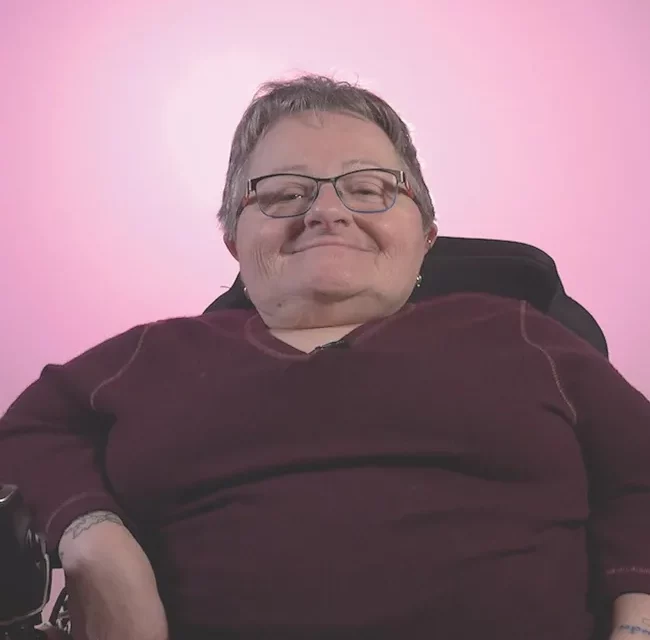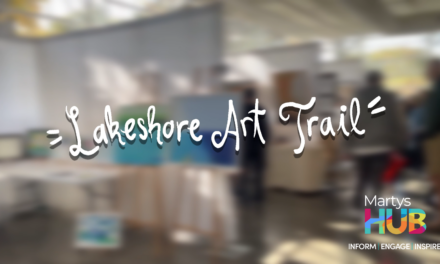By Sue Carter, Special to the Star. Thu., Aug. 4, 2022.
“I catch Toronto artist and curator James Fowler on his way home from the Gladstone House, after Sunday Drag Brunch with Miss Moço, an effervescent wig snatcher and Season 3 “Canada’s Drag Race” contestant who caught the attention of Cate Blanchett when she was in town shooting “Mrs. America.”
What many people might not know about Miss Moço is that, off the catwalk, Adam Moco is also a talented photographer whose portraits appeared in the 2013 iteration of “10×10,” another cultural institution that has shone the spotlight on the LGBTQ community for more than a decade.
Organized and curated by Fowler, who loves seeing participants like Moco celebrated out in the world, “10×10” looks a little different in its final year. After nine seasons at the Gladstone (then known as the Gladstone Hotel under its old ownership), followed by a two-year hiatus due to COVID-19 restrictions, “10×10” ends its reign at the Art Gallery of Mississauga with a final exhibition running until Aug. 28.
What hasn’t changed is the project’s mandate: every year 10 photographers are selected to each shoot photos of 10 LGBTQ culture makers without duplicating any previous subjects. An easy calculation, that represents 1,000 portraits over the decade, covering pretty much every creative discipline, as well as educators, administrators and philanthropists. It’s become an organic visual tribute to the broad diversity of the community’s talent and contributions across the country.
The Art Gallery of Mississauga might not seem like the most obvious location for “10×10” but, after a chance meeting with the city’s mayor, Bonnie Crombie, at a charity event, Fowler explained how the show lost its long-time home after the Gladstone was sold in 2019 and no longer had space available for public exhibitions. Crombie extended an invitation to Fowler to bring the show to Mississauga, an offer that was enthusiastically met by the gallery’s executive director, Anna Gulbinski, and the new curator, Shannon Anderson.
“They were there with really big open arms and absolutely wanted to support this project,” said Fowler. “It’s really nice that they created that opportunity for the community to come out and have a place to reflect on the amazing contributions that LGBTQ Canadians make to the arts.”
The show had its origins in 2011 at the White House Studio in Kensington Market, where Fowler and Joey Bruni had an idea to throw their own photo exhibition during Pride. After they quickly assembled it over six or seven weeks, they were not prepared for the reception, with lineups crawling down the street to get into the small space for the opening.
There’s been no lack of talent over the years, including internationally recognized photographers such as JJ Levine, Lise Beaudry, Michael Chambers and former Toronto photo laureate Michèle Pearson Clarke. Fowler gives free reign to the photographers to come up with their own visual concepts, provided they showcase their subjects.
“We usually meet up and have a chat to find something that works best for them. I think there’s only been a couple of times where I didn’t say no, but I did ask the artist to make a case for it,” said Fowler. “I remember one year somebody wanted to take nudes of all of their subjects. I said, ‘Why nudity? How is it celebrating them?’”
As a queer cisgendered white man, Fowler is also aware of his responsibility to ensure that within the LGBTQ umbrella, other more marginalized communities are represented. This year’s final roster of photographers is Thomas Brasch, Kim Fullerton, Ashley Iris Gill, Vince Ha, Kalmplex, Wade Muir, Public Studio, Joshua Rille, Jason Perreault and John Rubino.
Ha’s dreamy portraits, shot using moody projections to frame the subjects, who include author Tom Cho and Emmy Award-winning documentary producer Lisa Valencia-Svensson, highlight performers, filmmakers, activists and even a baker from the Asian diaspora, whereas many of Rille’s dramatic photos pay homage to Canada’s thriving ball culture. Fullerton’s subjects, shot against a candy floss pink, represent disabled artists, a group often left out of LGBTQ discourse.
Fowler got to know Gill when she was hired as a cinematographer for a previous artist’s project. Gill’s photos create capsule-like narratives by having her subjects sit with articles of their clothing hanging around them.
The Art Gallery of Mississauga gives the “10×10” project more footage than was previously available at the Gladstone. “It was nice to have a little bit of breathing room between some of the pieces,” said Fowler. “Each photographer really got their own space within the gallery.”
Despite the change in location, Fowler was thrilled by how many people came to the opening, which took place July 21, including some photographers whose work appeared in previous projects.
As in previous years, a book has been produced highlighting this year’s output and all 1,000 portraits are still available to view like a digital time capsule at 10x10photographyproject.com. While the project was very much a labour of love for Fowler, he is looking forward to spending more time in the studio on his own work. He does have some ideas about how to spin off “10×10” in the future, focusing on other LGBTQ communities who are often overlooked, such as athletes.
“I think (former Gladstone owner) Christina Zeidler said it best years ago, when she said it was like a homecoming every year,” said Fowler. “Every year there was another 10 photographers and another 100 portraits.””



























 Date: April 5, 2025
Date: April 5, 2025 Time: 10:00 AM – 2:00 PM
Time: 10:00 AM – 2:00 PM Location: Meadowvale Village Hall, 6970 Second Line West, Mississauga, ON Event Schedule
Location: Meadowvale Village Hall, 6970 Second Line West, Mississauga, ON Event Schedule  […]
[…]